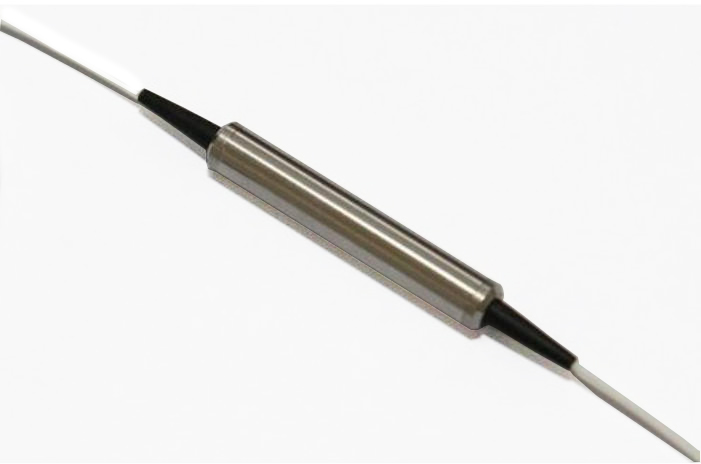High-Power Fiber Isolators: Principles, Technologies, and Applications
I. Definition of a High-Power Fiber Isolator:
High-power fiber isolator is a non-reciprocal photonic device based on the magneto-optical or acousto-optic effect. Its core function is to allow efficient transmission of optical signals in a specified direction (forward) while providing high attenuation (isolation ≥ 30dB) for reverse light. Unlike traditional mechanical optical switches, fiber isolators achieve isolation through a contactless physical mechanism. They offer advantages such as all-fiber integration, low insertion loss, and fast response speed, making them particularly suitable for laser systems operating in the kilowatt range and even higher.
II. Working Principle of a High-Power Fiber Isolator:
The core of high-power fiber isolators lies in the Faraday rotation effect. When linearly polarized light passes through a magneto-optical crystal (such as yttrium iron garnet (YIG)) in the direction of a magnetic field, its polarization plane rotates. However, reverse light, due to the opposite magnetic field, also reverses its direction of rotation. By placing a polarization beam splitter at the rear end of the crystal, forward light passes undamaged while reverse light is reflected or absorbed due to the change in polarization state, thus achieving unidirectional transmission.
III. Product Features of High-Power Fiber Isolators:
1. Ultra-High Power Tolerance
Targeted at kilowatt-class laser applications, the isolator utilizes an all-fiber design to eliminate the risk of air breakdown in the free-space optical path. Internally, it utilizes a high damage threshold coating (>10J/cm² at 1064nm), capable of withstanding continuous-wave laser powers exceeding 500W and peak powers reaching 10kW (10ns pulses), meeting the demands of high-energy applications such as industrial cutting and welding.
2. Low Insertion Loss and High Isolation
By optimizing the coupling process between the magneto-optical crystal and the polarizer, the product achieves forward insertion loss ≤0.3dB and reverse isolation ≥40dB, ensuring efficient optical transmission while completely blocking reverse interference.
3. Polarization-Independent Design
The combination of polarization-maintaining fiber (PMF) and a waveplate makes the device insensitive to the input light’s polarization state, preventing performance degradation due to polarization fluctuations. It is suitable for randomly polarized laser systems.
4. Compactness and Reliability
The all-fiber package measures only 12 x 80 mm and weighs less than 100 grams, making it easily integrated into lasers. Its passive internal cooling design eliminates the need for additional heat sinks and allows for wide operating temperature ranges from -40°C to 85°C.
IV. Applications of High-Power Fiber Isolators:
1. High-Power Fiber Lasers
In continuous-wave fiber lasers, isolators protect the seed light source from damage caused by reverse amplified spontaneous emission (ASE), extending device life. In pulsed lasers, their high damage threshold can withstand nanosecond/picosecond peak powers, ensuring stable system operation.
2. Laser Material Processing
In industrial applications such as metal cutting and welding, isolators block laser light reflected from the workpiece, preventing it from returning to the oscillator and causing damage. Their polarization-independent properties adapt to processing lasers with different polarization states, enhancing process flexibility.
3. Fiber Optic Sensing and Measurement
In distributed fiber optic sensing systems, isolators are used to separate signal light from backscattered light, improving measurement accuracy. In optical coherence tomography (OCT), their high isolation reduces noise interference and optimizes image quality.
4. Defense and Aerospace
In laser weapons and target designation systems, isolators prevent atmospheric scattering or target reflection from damaging the light source. Their radiation-hardened design adapts to the space environment and ensures the security of satellite laser communication links.
V. Selection Guide
When selecting a high-power fiber optic isolator, consider the following:
Power Matching: Select a model with a rated power at least 20% higher than the actual operating power.
Wavelength Matching: Ensure the operating wavelength is within the device’s specified range.
Connection Interface: FC/APC, QBH, and other interface types must be compatible with the system.
Environmental Requirements: Consider operating temperature range, humidity, and other conditions.

Comments are closed